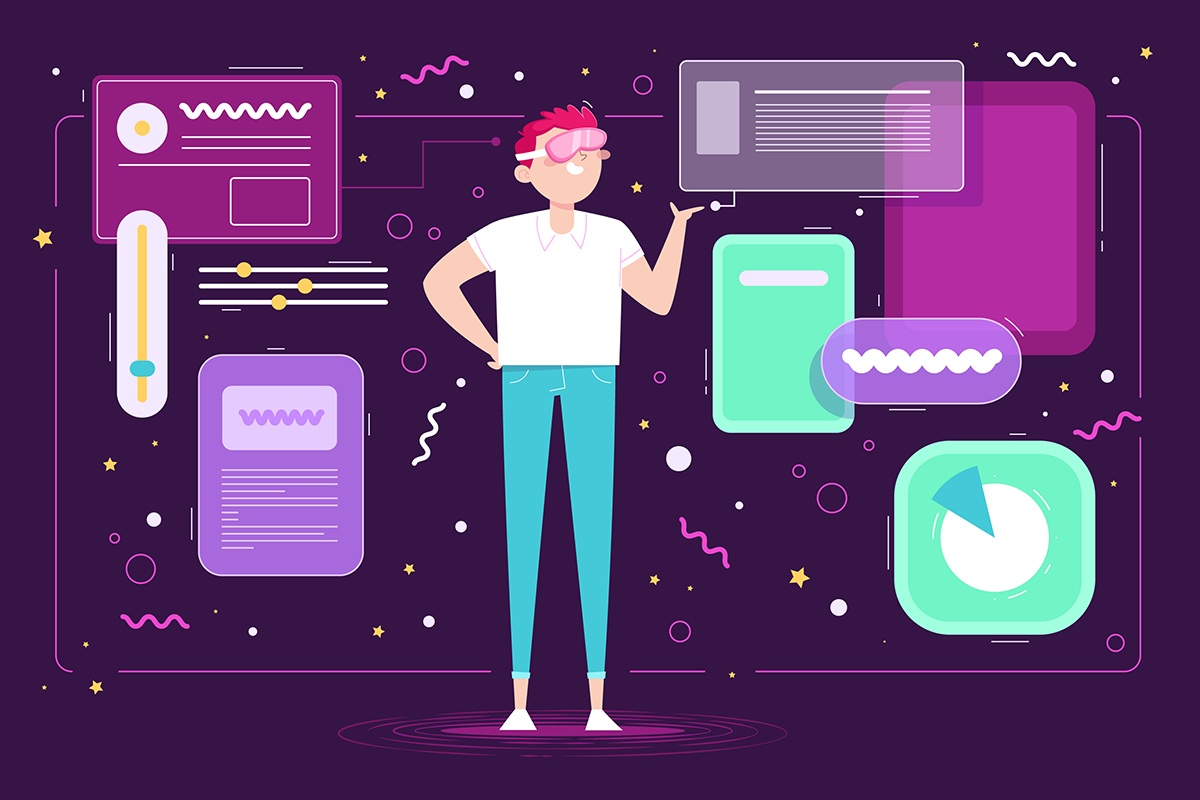The concept of accessibility is slowly growing as it now goes beyond disability accommodation to encompass broader inclusivity. For instance, left-handed users are now considered when designing new mouse designs. Similarly, restaurants are now offering multilingual menus for tourists. These instances show that accessibility isn’t solely about catering to disabilities but also about recognizing and accommodating diverse needs and preferences.
To redefine accessibility that benefits everyone, developers must recognize and address diverse needs and preferences from the outset, as well as products and services, to make them more inclusive and accessible to a broader audience.
GS Lab | GAVS conducted a webinar on Everything Products Episode 10: Level Up Your Design: The Accessibility Superpower empaneled by Mr. Akshay Potnis – Head of Design, Bird, Ex-Google, Slack, and Mr. Omkar Chorale, Lead UX Designer, GS Lab | GAVS.
Understanding Design Accessibility
The broader perspective of accessibility emphasizes that it’s not just about accommodating disabilities but also about inclusivity for diverse user groups and adapting to various technologies that aid accessibility. For example, redesigning road curbs for wheelchair users, creating inclusive applications like Booklet for diverse reading preferences and highlighting the distinction between equality and equity. This broadened perspective to create responsible design removes friction for all users, thus aiming for a seamless and inclusive experience for everyone.
Redefining accessibility addresses the mismatches between user expectations and design rather than focusing solely on differences between disability and non-disability. This shift in perspective emphasizes inclusivity and the goal of reducing mismatches for all users. To that end, developers must create a framework where accessibility is seen as minimizing these mismatches, leading to more inclusive and accessible designs. This reframing opens new possibilities for considering diverse user needs and preferences beyond traditional disability accommodations.
The motivation behind prioritizing accessibility should be rooted in personal experiences and recognizing life’s unpredictability. These elements lay the foundation for the ‘inclusive design superpower’, shifting the focus from mere accessibility to a broader inclusivity perspective. To start building this ‘superpower’ of redefined accessibility, one must address the importance of shifting perspectives. This involves moving away from the traditional view of accessibility as a niche concern for people with disabilities towards a more inclusive understanding that addresses a broader range of user needs.
Compliance and Design Accessibility
While talking about accessibility, it is necessary to address the importance of compliance with accessibility guidelines, particularly the Web Content Accessibility Guidelines (WCAG), which outline principles of perceivability, operability, understandability, and robustness. The four categories of users affected by accessibility considerations include users with vision impairments. This group includes individuals who are color blind, partially blind, or blind, necessitating considerations such as sufficient color contrast, clear labeling, and provision of alternative text for images. Those with visual impairments can benefit from increasing enough color contrast and alternative text for images, screen readers or zoom features.
The other categories of disabilities include those with motor disabilities, which can affect users’ ability to use a mouse. This can be remedied by creating keyboard accessibility features for navigation. Next, auditory disabilities can be addressed by reducing background noise and providing captions for audio and video content. Finally, those with cognitive disabilities, including ADHD and cognitive impairments, can benefit from designs that have minimal distractions, use simple icons, and provide clear instructions.
Tools like the Stark plugin in Figma can streamline the design process for accessibility. These tools dispel the myth that accessibility is difficult to achieve, as they provide designers with actionable insights and simulations to ensure accessibility standards are met. By integrating these tools into their workflow, designers can deliver accessible designs more efficiently, reducing friction and simplifying the process. It also brings to the forefront the value of closed feedback loops facilitated by these tools. This helps designers visualize and accommodate various disabilities or preferences and removes the myth that accessibility is time-consuming or challenging, showing that thoughtful design and accessibility tools can make the process more manageable.
AI-Driven Content vs. Design Accessibility
Building a superpower in design is essential, particularly in advancing technology and AI-driven applications. There is a growing need to anticipate and address mismatches in AI-generated content, such as cultural insensitivity or misinterpretation of context. By identifying these mismatches early and designing for inclusivity, designers can play a crucial role in creating a more secure and equitable future for all users.
For example, in the “Balenciaga Pope” incident, an AI system was asked to generate an image of the Pope wearing Balenciaga clothing. The resulting image depicted the Pope in a hoodie, which sparked outrage due to its perceived disrespect towards religious symbols and figures. This incident and many others stress the proactive role of designers in shaping a more inclusive and responsible digital landscape through thoughtful design practices.
Future of Design Accessibility
As design accessibility continues to evolve, developers must address the needs of diverse user pools, including different age groups and language preferences. They highlight the role of assistive technologies and the responsibility of designers in integrating accessibility features into their designs. They also present examples of how real human feedback loops and contextual AI can improve AI systems’ ability to serve diverse user demographics better. They emphasize the collaborative effort needed to enhance AI models and ensure they are culturally relevant and contextually appropriate for all users.
While this blog offers only a high-level gist of the webinar, you can watch the entire webinar here. For more such videos, you can visit https://www.gslab.com/webinars/ and https://www.gavstech.com/videos/.
The UNBOX team is the UX COE at GS Lab | GAVS. The team focuses on the big picture while staying tuned to evolving trends, technologies, and human behavior. With about two decades of product engineering expertise, GS Lab | GAVS delivers best-in-class user experiences that drive product acceptance. To learn more about our User Experience Design services, please visit https://www.gslab.com/user-experience-design/.




